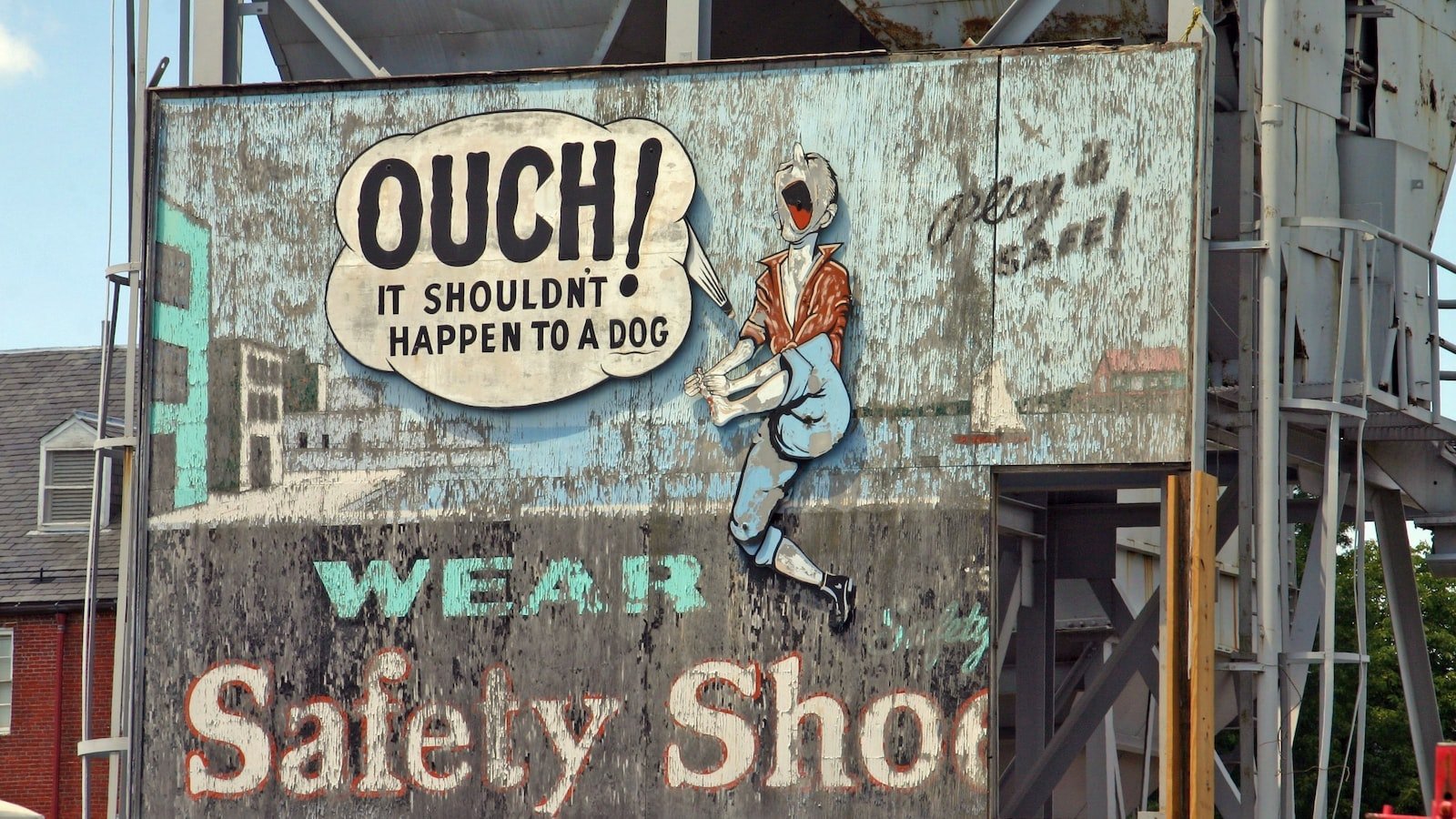Through the windows of our souls, our eyes allow us to perceive the world in all its breathtaking beauty. Yet, as delicate as they are mesmerizing, our eyes can be susceptible to various injuries that may leave us feeling helpless. Whether it’s a small irritating particle or a more severe trauma, knowing how to handle eye injuries is crucial – knowledge that may just make a difference between a momentary discomfort and long-lasting consequences. Join us on this enlightening journey as we explore first aid tips for eye injuries and when it’s time to seek the professional help our precious eyes truly deserve.
Recognizing Different Types of Eye Injuries: Understanding Causes and Symptoms
Our eyes are incredible organs that play a vital role in our everyday lives. However, they are also susceptible to various injuries which can have a profound impact on our vision. It is important to be able to recognize the different types of eye injuries so that prompt action can be taken to prevent further damage. Here, we will explore some common causes and symptoms of eye injuries to help you better understand how to identify them.
1. Corneal Abrasion
A corneal abrasion occurs when the clear, protective layer covering the front of the eye gets scratched. This can happen due to foreign objects, such as debris or contact lenses, rubbing against the cornea. Some common symptoms of corneal abrasions include:
- Eye pain or discomfort
- Redness and inflammation
- Blurred or hazy vision
- Sensitivity to light
- Excessive tearing
2. Chemical Burns
Chemical burns to the eye can occur when harmful substances come into contact with the eye, causing damage to the cornea and surrounding tissues. Common causes include exposure to household chemicals, industrial solvents, or even certain beauty products. If you suspect a chemical burn to the eye, watch out for the following symptoms:
- Intense eye pain and discomfort
- Redness and irritation
- Excessive tearing or discharge
- Blurred or distorted vision
- Sensitivity to light
3. Penetrating Injuries
Penetrating injuries occur when a foreign object, such as a piece of glass or metal, pierces the eye. These types of injuries are serious and require immediate medical attention. Symptoms of a penetrating eye injury may include:
- Severe eye pain
- Visible object or bloody discharge from the eye
- Decreased or loss of vision
- Sensitivity to light
- Swelling and redness
Remember, if you or someone you know experiences any of these symptoms or suspects an eye injury, seek medical attention without delay. Quick identification and proper treatment can make all the difference in protecting your vision and preventing further complications.

Providing Immediate First Aid for Eye Injuries: Essential Steps to Follow
When it comes to eye injuries, prompt action is crucial to prevent further damage and ensure a speedy recovery. Here, we outline the essential steps to provide immediate first aid for eye injuries:
Step 1: Assess the Situation
Before jumping into action, take a moment to assess the severity of the injury. Look for obvious signs of trauma such as bleeding, foreign objects lodged in the eye, or a visibly swollen or discolored eye. Understanding the nature of the injury will help you determine the appropriate course of action.
Step 2: Wash Your Hands
Before touching the affected eye, it is essential to wash your hands thoroughly with mild soap and warm water. This precautionary measure reduces the risk of introducing harmful bacteria or additional contaminants to the injury.
Step 3: Flushing the Eye
In most cases, the first reaction to an eye injury is rubbing the eye, but this can exacerbate the damage. Instead, gently flush the eye with clean water or saline solution to remove any foreign objects or irritants. Hold the eye open with care and let the water flow from the inner corner to the outer corner.
Step 4: Cover and Protect the Eye
To minimize further harm, cover the injured eye with a clean, sterile dressing or a soft cloth. This will protect the eye from additional contaminants and reduce the risk of accidental rubbing or touching. Avoid applying pressure to the eye, as this can lead to complications. If available, a protective eye shield can also be used.
Remember, immediate first aid is vital, but it should always be followed by seeking professional medical attention. Eye injuries can range from minor to severe, and proper evaluation and treatment by a medical professional are essential for a full recovery. By following these essential steps, you can provide immediate care and improve the chances of a favorable outcome.

When to Seek Professional Help for Eye Injuries: Understanding the Severity
Eye injuries can occur in various situations, and it is essential to understand the severity of these injuries to determine whether or not professional help is necessary. While some eye injuries may require simple home remedies, others can be more serious and require immediate attention from a medical professional. Here are some key factors to consider when deciding whether or not to seek professional help for eye injuries.
Symptoms:
- If you experience severe pain or a sharp, intense sensation in your eye, it is crucial to seek professional help promptly.
- Blurred vision, double vision, or difficulty seeing clearly after an injury should not be taken lightly, as they could indicate a more severe problem.
- If you notice excessive tearing or discharge, it may be a sign of an infection or inflammation, necessitating professional evaluation and treatment.
Extent of Injury:
- If there is a visible object stuck in your eye, it is vital to avoid touching it and seek professional help immediately to prevent further damage.
- Any injury that results in a cut or puncture to the eye or eyelid should be evaluated by a medical professional as soon as possible.
- If your eye has been exposed to chemicals or foreign substances, it is crucial to seek immediate professional assistance to minimize potential long-term damage.
Additional Considerations:
- Eye injuries accompanied by symptoms like severe headache, nausea, or dizziness may indicate a more serious underlying condition.
- Age can play a role in determining the severity of eye injuries. Children, the elderly, and individuals with pre-existing eye conditions should always seek professional help to ensure proper care.
- When in doubt, it is always better to err on the side of caution and consult with a medical professional to address any uncertainties surrounding the severity of your eye injury.
Remember, your eyes are a precious and delicate part of your body, and seeking professional help for eye injuries should not be taken lightly. By understanding the severity of your symptoms and the extent of your injury, you can make an informed decision and ensure the best possible care for your eyes.

Preventing Eye Injuries: Proactive Measures for Safety
When it comes to eye injuries, prevention is always better than cure. Taking proactive measures for safety can help you avoid potential harm and maintain good eye health. Here are some tips and tricks to keep your eyes protected:
- Wear appropriate safety gear: Whether you’re working in a hazardous environment or engaging in recreational activities, make sure to wear the necessary eye protection. Safety goggles, glasses, or face shields can shield your eyes from flying debris, chemicals, or harmful UV radiation.
- Be mindful of screen time: In today’s digital age, we often spend long hours staring at screens. To prevent eye strain and fatigue, remember to take frequent breaks, adjust display settings for optimal brightness and contrast, and maintain a comfortable distance between your eyes and the screen.
- Practice proper hygiene: Keeping your hands clean and avoiding touching your eyes can reduce the risk of infections and irritations. Additionally, regularly cleaning and disinfecting contact lenses and their cases is vital for preventing eye-related complications.
- Maintain a healthy diet: A nutritious diet not only benefits your overall well-being but also supports eye health. Incorporate foods rich in vitamins A, C, and E, as well as omega-3 fatty acids, into your meals. Carrots, leafy greens, citrus fruits, and fish are excellent choices.
Remember, taking proactive measures to prevent eye injuries is crucial for maintaining clear and healthy vision. By following these simple tips, you can ensure the well-being of your eyes and enjoy life’s wonders without worry.

Safety Measures for Common Eye Injury Situations: Tips for Specific Environments
Safeguarding Your Eyes in Outdoor Settings
When venturing into the great outdoors, it’s crucial to protect your eyes from potential hazards. Whether you’re hiking through dense forests or enjoying a day at the beach, keep these safety measures in mind:
- Wear UV-blocking sunglasses to shield your eyes from harmful sun rays. Opt for sunglasses with wraparound frames for maximum coverage.
- Use safety goggles when participating in adventurous activities like rock climbing, cycling, or practicing archery.
- Avoid staring directly at the sun to prevent irreversible damage. During solar eclipses, make use of certified solar viewing glasses.
Eye Safety Precautions at Work
While your workplace may vary, it’s essential to take eye safety precautions regardless of the environment:
- Wear appropriate eye protection, such as safety glasses, goggles, or face shields when working with hazardous chemicals, flying debris, or machinery.
- Ensure your workspace is well-lit to minimize eye strain and prevent accidents caused by poor visibility.
- Follow proper ergonomic practices, positioning your computer monitor at eye level to maintain good posture and reduce eye fatigue.
Protecting Your Eyes Indoors
Even within the comfortable confines of our homes, potential eye injury situations can arise. Here are some tips to maintain eye safety indoors:
- When handling strong cleaning agents or participating in DIY projects involving flying debris, always wear protective eyewear.
- Minimize eye strain caused by prolonged screen time by following the 20-20-20 rule: every 20 minutes, look away from the screen and focus on something 20 feet away for 20 seconds.
- Keep hazardous substances, such as detergents, acids, or sharp objects, out of the reach of children, ensuring their safety and preventing potential eye accidents.
Remember, taking the appropriate safety measures in specific environments is crucial to protect the delicate organ that is your eyes. By following these tips, you can significantly reduce the risk of eye injuries and preserve your vision for years to come!
Future Outlook
As we come to the end of this enlightening journey on handling eye injuries, we hope you have gained a newfound sense of confidence in dealing with such emergencies. Remember, the eyes are the windows to the soul, and it is our responsibility to protect and care for them.
In times of distress, it is essential to remain calm and composed. With the first aid tips and knowledge you have acquired, you are now equipped to handle a variety of eye injuries with ease. Whether it’s a speck of debris in the eye, a chemical splash, or a more serious injury, these practical steps will undoubtedly aid in your immediate response.
Keep in mind that while first aid is essential in alleviating pain and preventing further damage, there are instances where professional help becomes imperative. Trust your instincts, and if the pain persists or the injury seems severe, do not hesitate to seek medical attention promptly.
Never underestimate the power of prevention. Inculcate good eye care habits, such as wearing protective eyewear when engaging in risky activities, avoiding rubbing your eyes excessively, and following proper hygiene practices. As cliché as it may sound, prevention truly is the best cure.
We sincerely hope that this article has not only educated you but provided a sense of empowerment to handle eye injuries confidently. It is our wish that you never have to face such a situation, but if you do, remember these first aid tips and when to seek professional help.
Stay vigilant, stay informed, and most importantly, keep those precious eyes safe!
Until we meet again, take care and be well.




